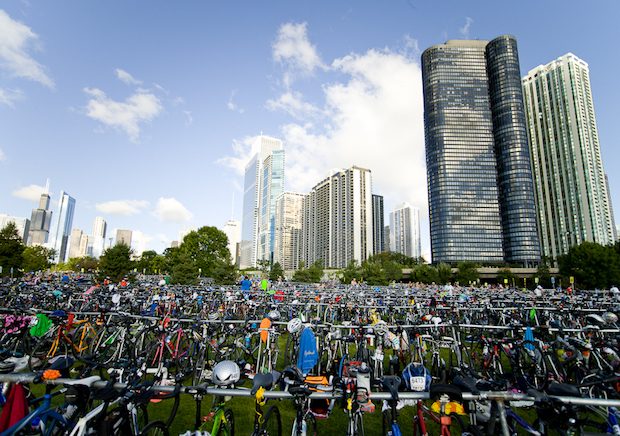Is Short Course Ready for a US Resurgence?

For as much as the IRONMAN Group is taken to task, there is one fact: it is by far the largest organizing body of races globally, and certainly has a stronghold on the American racing scene. Where IRONMAN has classically failed, however, is outside of its truly iron-branded events: for example, the 5150 series of Olympic distance races, which remain available anywhere in the world but the United States. But everyone, IRONMAN included, recognizes is that there needs to be a steady pipeline of new athletes into our sport, and a diversity of event types to keep those athletes entertained for a lifetime.
The news yesterday, then, that Super League Triathlon had acquired two landmark US short-course events — the Chicago and New York City triathlons, respectively, from Life Time Fitness — marks a clear return toward making shorter races a key component of the American racing scene. Super League isn’t going at it alone; CLASH Endurance is also making clear that it is offering a diversified short-course product.
But what it does do, in my opinion, exactly what the PTO has been attempting to accomplish with its PTO Tour events. The difference being that Super League, by buying into these two large events, will have the age group racing component that the PTO sought to have — at least with their 2022 races. There were over 2400 finishers in the Olympic distance race in Chicago last year. There were over 2000 entries in the sprint at that same race. Comparatively, the PTO US Open had 336 individual finishers of the 100 KM race, and 240 in their 25 KM event.
This can help bring an in-person audience to one of the more ambitious professional triathlon products on the market, enhancing the potential broadcast opportunity. The racing itself in Super League is incredibly compelling, with some in our forum arguing that it’s the most exciting form of triathlon on the marketplace.

The largest logistical hurdle that SLT will face is making non-traditional triathlon fans care about its racing product. And that’s probably the biggest critique that I would have of the organization as it enters 2023, as it seems like SLT can’t make a determination as to what it wants to be. Is it an individual competition, or a team sport? And if it’s a team sport, then why not pursue the mixed relay model as the path forward?
It’s not far off from another upstart league attempting to bring teams to a largely individual sport — LIV Golf. And they both have struggled with brand identity as people focus more on the individual performances than they have trying to figure out how the team structure works. I’d implore SLT to try to determine whether the teams or the individuals matter more, and then develop the racing product solely around that aspect.
But that being said, it’s probably the most exciting time for short course in America since Life Time entered into the sport. But Life Time also provides a cautionary tale. It was only six years ago that we were extolling the virtue of Life Time announcing a flat pricing structure and not requiring USA Triathlon membership or one-day licenses. And yet it’s Life Time backing further and further away from triathlon today.
This, however, feels different. It feels more organic, less corporate. It helps that the people leading the charges at SLT and Clash are deeply invested in triathlon as a whole. There’s an understanding of the ecosystem of the sport, and the need for short course racing to be an integral part of it. And there’s an understanding that, for better or for worse, athletes have traditionally voted to support larger-scale race producers. By bringing more name value and national exposure to short course events, it gives a greater opportunity at driving new athletes towards a marquee event. And hopefully, they stick around for a while.


Start the discussion at slowtwitch.northend.network